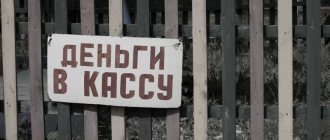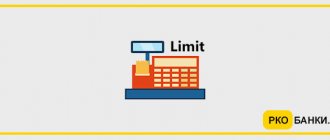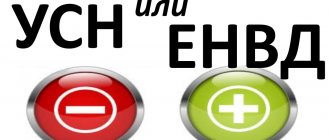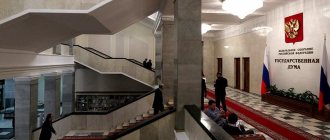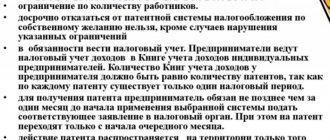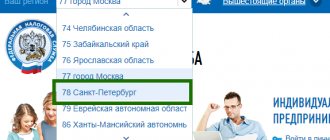Taxation systems in the Russian Federation
Any newly registered organizations or individual entrepreneurs apply the general taxation regime by default.
It involves the payment of the main taxes in force in Russia, the list of which is given in Chapter. 2 part 1 of the Tax Code of the Russian Federation. In addition to OSNO, a taxpayer has the right, upon application, to use special regimes that exempt from payment of a number of taxes established for OSNO, replacing them with another tax or a system of tax benefits. Today the following special regimes are in effect in the Russian Federation:
- Unified Agricultural Tax is a taxation system for agricultural producers (Chapter 26.1 of the Tax Code of the Russian Federation), is a basic taxation system (i.e., the enterprise as a whole, and not a separate type of activity, switches to it), it can be used by firms and individual entrepreneurs carrying out strictly defined activities in relation to a certain type of product;
- STS - simplified (Chapter 26.2 of the Tax Code of the Russian Federation), is also a basic system, it can be used by companies and individual entrepreneurs, regardless of the type of activity, but having limited amounts of income and meeting certain criteria in terms of number of personnel, book value of fixed assets, etc.;
- UTII (until 01/01/2021) - imputation (Chapter 26.3 of the Tax Code of the Russian Federation), it can be used by companies and individual entrepreneurs in relation to strictly defined one or several types of activities;
- PSA is a taxation system for the implementation of a production sharing agreement (Chapter 26.4 of the Tax Code of the Russian Federation), used in relation to all activities by one legal entity or an association of legal entities when, within the framework of an agreement, the search and production of mineral raw materials in a subsoil plot that belongs to the state;
- PSN is a patent taxation system (Chapter 26.5 of the Tax Code of the Russian Federation), applied only to individual entrepreneurs in relation to strictly defined types of activities.
Conditions for combining the “simplified” system and the patent system
The simultaneous use of simplified taxation system and PSN is limited by the following indicators:
- total revenue no more than 60 million rubles
- average number of employees up to 130 people
- residual value of fixed assets no more than 150 million rubles
Acceptable income amount
If the income of an individual entrepreneur exceeds the established limit, the right to use the patent will be lost from the beginning of the tax period .
If an entrepreneur has several patents during the year, then the transition to the “simplified” system will occur during the period of violation of the limit.
Example . The entrepreneur has at his disposal patents with a useful life:
- from February 1 to March 31
- from April 1 to June 30
In May, the amount of revenue exceeded the established limit, therefore, from April 1, the individual entrepreneur must recalculate in accordance with the requirements of the simplified tax system.
This rule is contained in the letter of the Ministry of Finance of the Russian Federation dated August 7, 2019 No. 03-11-11/59523.
Personnel limit
The procedure for accounting for revenue in the patent system is prescribed in the Tax Code of the Russian Federation (clause 6 of Article 346.45 of the Tax Code of the Russian Federation), which cannot be said about accounting for the number of personnel when combining tax regimes.
The Ministry of Finance of the Russian Federation, in its letter dated September 20, 2021 No. 03-11-12/67188, is of the opinion that an entrepreneur can separately account for personnel depending on the type of tax regime applied. At the same time, the question remains open: are employees on the STS counted as part of the maximum number of employees on the simplified tax system or separately?
In accordance with paragraphs. 15 clause 3 art. 346.12 of the Tax Code of the Russian Federation, the requirement to comply with the number of employees when applying the simplified taxation system applies to the entire organization.
Consequently, an individual entrepreneur who combines the simplified taxation system and the PSN in his activities cannot have more than 130 people on his staff . The number of employees on a patent is taken into account “including”.
One employee participates in two types of activities under different tax regimes
Let’s assume that an entrepreneur has an accountant who keeps records for all tax regimes used.
The Ministry of Finance of the Russian Federation in its letter dated July 2, 2013 No. 03-11-06/3/25138, considering a similar example in relation to UTII and simplified tax system, came to the conclusion that management personnel who participate in UTII activities must be taken into account when determining tax on imputed income.
However, the Federal Antimonopoly Service of the Ural District, in its Resolution No. F09-4708/10-S3 dated June 24, 2010, takes the position that management personnel are involved in all activities and cannot be taken into account in only one area of activity.
Based on the above, in order to avoid conflict situations, it is recommended to strictly adhere to the number limit for the PSN (15 people) .
Residual value of fixed assets
The Ministry of Finance of the Russian Federation and the Federal Tax Service believe that individual entrepreneurs using the “simplified system” should not violate the limit on the cost of fixed assets of 150 million rubles. The Supreme Court of the Russian Federation adheres to the same position.
Officials of the Ministry of Finance of the Russian Federation, in their letter dated March 6, 2019 No. 03-11-11/14646, considered that cost accounting should be kept separately, that is, separately depending on the type of tax regimes applied.
However, the norms of the Tax Code of the Russian Federation contain a different position. Art. 346.12 of the Tax Code considers a similar point of combining UTII and simplified tax system, in which it is necessary to maintain a consolidated accounting of the cost of fixed assets.
To minimize the risk of receiving penalties, it is better that the total cost of fixed assets (STS + PSN) does not violate the limit of 150 million rubles .
Is it possible to combine OSNO and simplified tax system according to the Tax Code of the Russian Federation?
The possibility of applying the simplified tax system does not depend on the type of activity carried out by the company or individual entrepreneur, but on the scale of the activity.
Important! ConsultantPlus warns: It is prohibited to use the simplified tax system for certain types of activities. So, they cannot work on the simplified tax system: (for more details, see K+).
Simplified taxation and OSNO are the basic taxation systems, which explains the impossibility of their simultaneous application. This position is supported by the Ministry of Finance in its letters dated October 20, 2017 No. 03-11-06/2/68765, dated September 8, 2015 No. 03-11-06/2/51596.
The courts adhere to a similar position (rulings of the Constitutional Court of the Russian Federation dated October 16, 2007 No. 667-О-О, Supreme Arbitration Court of the Russian Federation dated October 4, 2011 No. VAS-13098/11 in case No. A06-6415/2010).
Read the recommendations for choosing a tax regime set out in the materials:
- “What is the difference between the simplified tax system and the OSNO? What is more profitable? ;
- “What are the possibilities for optimizing taxes under the simplified tax system?”.
General system
With a general system:
profit tax is for organizations - 20% on the difference between income and expenses, and for private entrepreneurs - income tax at a rate of 13%:
it is necessary to pay property tax, if any;
VAT at the rate of 18%.
OSNO can be either profitable or unprofitable, and this often depends on VAT. Having to pay this tax every quarter requires keeping all documentation in order, especially invoices, which can reduce your tax base.
OSNO is an ideal option for those who are engaged in wholesale trade or cooperate with large companies.
Combination of tax regimes for legal entities
Firms have the right to use OSNO, Unified Agricultural Tax, USN, UTII (until 01/01/2021), PSA.
Only certain types of activities are transferred to UTII, so this system can be combined with all of the listed systems, except for the PSA, in which these types of activities are not carried out in principle.
Read about the features of combining simplified taxation system and UTII here.
PSA is generally not combined with any taxation system, since under this regime the organization’s activities are completely preferential.
Also, the activities of a company under the Unified Agricultural Tax are completely transferred to a special regime, however, it is permissible to use UTII for certain types of activities.
Possible combinations of tax regimes for firms are shown in Table 1.
Table 1
| Mode | BASIC | Unified agricultural tax | simplified tax system | UTII (until 01/01/2021) | PSA |
| BASIC | X | — | — | + | — |
| Unified agricultural tax | — | X | — | + | — |
| simplified tax system | — | — | X | + | — |
| UTII | + | + | + | X | — |
| PSA | — | — | — | — | X |
When the question arises about combining simplified taxation system and OSNO
Why does the question arise about combining the simplified taxation system and the OSNO, if the simplified taxation system is clearly more profitable and convenient?
One of the main reasons is related to VAT, or rather its absence during simplification. After all, if a supplier sells goods or provides services without VAT, then his counterparty cannot reimburse this tax.
Therefore, large buyers working for OSNO may prefer the simplified one to its competitor, who issues documents with a separate VAT.
In addition, under the simplified tax system, tax is paid even in the case of unprofitable activities. This mode can be used in two versions - with “income” and “income minus expenses” objects.
In the first case, everything is clear: here the base is all income, regardless of the amount of costs. But even when using the second object, the minimum tax will have to be paid in any case. It is provided for in paragraph 6 of Art. 346.18 of the Tax Code of the Russian Federation and amounts to 1% of income.
Therefore, in some cases it is more profitable to leave part of the business on OSNO. These may be types of activities with low profitability or those areas of work that are primarily focused on buyers - VAT payers.
Whether this can be done from a legal point of view will be discussed in the following sections.
Combination of tax regimes for individual entrepreneurs
The possibilities of individual entrepreneurs in terms of combining taxation regimes are significantly wider than those of companies, due to the PSN, which can be used in conjunction with any other system used by the individual entrepreneur, since, as with UTII, certain types of activities are transferred to PSN.
Look at examples of combining the patent and simplified taxation systems in the material “Is it possible to combine the simplified tax system and the PSN (examples)?”
Possible combinations of taxation regimes for individual entrepreneurs are shown in Table 2.
table 2
| Mode | BASIC | Unified agricultural tax | simplified tax system | UTII (until 01/01/2021) | PSN |
| BASIC | X | — | — | + | + |
| Unified agricultural tax | — | X | — | + | + |
| simplified tax system | — | — | X | + | + |
| UTII | + | + | + | X | + |
| PSN | + | + | + | + | X |
Is it possible to combine three modes?
Combining the three modes is only possible for an entrepreneur. These are such regimes as the simplified tax system (OSNO), UTII and the Patent system. To combine these three modes, the following conditions must be met:
- The number of employees must not exceed 15 people (this limitation applies to the Patent System, and therefore to the entrepreneur in 3 modes too);
- Separate accounting of property, business operations and obligations under all three modes;
- The presence of two books of accounting for income and expenses - one for activities subject to the simplified tax system, the other for activities subject to the Patent.
Thus, an entrepreneur must keep records very strictly and differentiate all income and expenses by type of activity.
Results
The combination of OSNO and simplified tax system is unacceptable. These tax systems are alternatives to each other. This position has been confirmed more than once by the Ministry of Finance and judicial practice. For certain types of activities, it is permissible to use imputation or the patent system (if we are talking about individual entrepreneurs), combining these regimes with the simplified tax system or OSNO.
Sources: Tax Code of the Russian Federation
You can find more complete information on the topic in ConsultantPlus. Free trial access to the system for 2 days.
Can an individual entrepreneur simultaneously apply the simplified taxation system and the OSNO?
However, not only organizations, but also entrepreneurs can work using simplification.
The status of an individual entrepreneur as an economic entity is somewhat ambiguous. On the one hand, this is the owner of a business, often with very significant turnover, and on the other, an individual.
Therefore, the legislation provides for a number of concessions in the financial field for individual entrepreneurs compared to legal entities. For example, they have the right not to conduct standard accounting, may not submit returns for certain types of taxes, etc.
This raises the question: can an individual entrepreneur combine the simplified tax system and the OSNO? The answer in this case is also negative. Regulations ch. 26.2 of the Tax Code of the Russian Federation does not provide any exceptions for entrepreneurs in this area.
An individual entrepreneur, similar to a legal entity, can switch to simplified legislation if it meets the requirements of Art. 346.12 Tax Code of the Russian Federation. A reverse transition is also possible - voluntary from the beginning of the calendar year or due to exceeding established limits (Article 346.13 of the Tax Code of the Russian Federation). But here, too, we are talking about a complete transfer of the entire business to one of two tax regimes, without singling out certain areas.
ConsultantPlus experts spoke about how to use the simplified tax system for an individual entrepreneur in a ready-made solution. If you don't already have access to the system, get a free trial online.
Features of accounting for insurance premiums
Accounting for mandatory insurance premiums under special regimes has a number of important features. Let's look at them in more detail.
Preferential rates
In 2021 - 2021, a significant part of businessmen using special regimes, including the simplified tax system and UTII, could enjoy preferential rates on insurance premiums. Starting from 01/01/2019, almost all of them switch to standard rates.
Insurance premium rates
The table shows that in 2021, of all the “simplified” and “imposed” members, only non-profit and charitable organizations will retain benefits on contributions (clause 3, clause 2, article 427 of the Tax Code of the Russian Federation). For the rest, the total burden of contributions will immediately increase by one and a half times - from 20% to 30%.
By making contributions you can reduce your tax amount. But there are nuances here too.
Insurance premiums as tax deductions
Tax deductions are expenses through which a businessman can reduce the taxable base or the total amount of tax payable.
The procedure for using insurance premiums as tax deductions is the same for UTII and for the simplified tax system with the object “Income” (clause 3.1 of Article 346.21 of the Tax Code of the Russian Federation and clause 2.1 of Article 346.32 of the Tax Code of the Russian Federation). For the object “Income minus expenses”, special deductions for contributions are not provided, since they, together with other expenses, already reduce the tax base.
If an organization or individual entrepreneur has employees, then the final tax amount can be reduced through contributions by no more than 50%. And for those individual entrepreneurs who work alone, the deduction for contributions “for oneself” is applied without restrictions.
To correctly apply deductions for both taxes, you need to distribute the amount of contributions between types of activity. This should be done as shown in the previous section: if possible - directly, and for employees belonging to both areas of work - in proportion to revenue.
The entrepreneur is on the simplified tax system, and the employees are on UTII
An interesting situation arises if the entrepreneur himself uses the simplified tax system with the object “Income”, and all his employees are engaged in activities on UTII.
In this case, it turns out that in a “simplified” business, the entrepreneur works alone and is not considered an employer. Consequently, he can fully deduct contributions for himself from the “simplified” tax. This position is confirmed by clarifications from the Ministry of Finance of the Russian Federation (letter dated May 25, 2016 No. 03-11-11/29929).
How to keep records when combining PSN and simplified tax system
Accounting should be kept separately, namely:
- income and expenses;
- property;
- obligations;
- business transactions.
Accounting for income and expenses when combining simplified taxation system and PSN
As for the distribution of income, the question most often arises of how to distribute non-operating income. Such income cannot be confidently attributed to any one of the combined activities.
In such cases, the point of view of the Ministry of Finance is that this type of income cannot be distributed between combined SNOs.
The Federal Tax Service believes that income from such a plan should be taken into account in full in calculations for the simplified tax system.
An example of such income is the sale of a fixed asset (letter of the Ministry of Finance dated January 29, 2016 No. 03-11-09/4088).
Expenses that relate to the business as a whole, for example, office rent, accountant's salary and the like, must be distributed proportionally between both types of activities.
This requirement is described in paragraph 8 of Art. 346.18 Tax Code of the Russian Federation.
The individual entrepreneur combines the simplified tax system “income minus expenses” and a patent. To distribute expenses, he uses the revenue “on payment” received on an accrual basis from the beginning of the year. The indicators for the first quarter of 2021 are as follows:
revenue from the simplified tax system - 7 million rubles;
revenue from PSN - 3 million rubles;
expenses for distribution (salary of an accountant, logistics specialist and office rent) - 500 thousand rubles.
Calculation
Total revenue for the 1st quarter: 7 + 3 = 10 million rubles.
Share of revenue on the simplified tax system in the total amount: 7 / 10 = 70%.
The amount of distributed costs that will be taken into account when calculating the simplified tax for the first quarter of 2021: 500 × 70% = 350 thousand rubles.
Unfortunately, the Tax Code of the Russian Federation does not have a clear rule by which this proportion is drawn up. It is not indicated, for example, what type of revenue accounting to use: by shipment or by payment.
In the case of combining the simplified tax system and UTII, by letter of the Ministry of Finance dated September 29, 2009 No. 03-11-06/3/239, it was agreed to use revenue accounting “by shipment”.
However, PSN differs from UTII in this regard. When working on a patent, accounting occurs in the same way as in the simplified tax system, i.e. upon payment.
For expenses, the cash method is used similarly. In addition, in the above letter the requirement to keep records was presented for legal entities, and not for individual entrepreneurs.
The next question that arises is which billing period to use to calculate the proportion. The problem is that for the simplified tax system the tax period is equal to one calendar year. While a patent can be issued for a month or two, up to 1 year.
It is worth noting that for combining the simplified tax system and the PSN, the procedure for determining the billing period is not described. However, when combining the simplified tax system and UTII, the Federal Tax Service recommended keeping records on a monthly basis, cumulatively from the beginning of the year (letter of the Ministry of Finance of the Russian Federation dated March 29, 2013 No. 03-11-11/121).
Thus, there are two ways out of this situation: act by analogy with the scheme for the simplified tax system + UTII, or develop and consolidate your own calculation scheme in the accounting policy.
Types of tax regimes that can be combined
Currently, there are several special tax regimes . Their differences lie in the areas of activity of potential taxpayers, their expected income and the number of employees, as well as in factors such as restrictions, validity periods, administration subtleties and others.
There are currently four special tax regimes for small businesses :
1) taxation system for agricultural producers (unified agricultural tax - Unified Agricultural Tax);
2) simplified taxation system (STS);
3) taxation system in the form of a single tax on imputed income for certain types of activities (UTII);
4) patent taxation system (PTS).
Combination of tax regimes for one type of activity in one region
The next restriction is the ban on conducting activities on two aids to taxation (STS and PSN) in the same region for the same type of activity.
This prohibition is described in the letter of the Federal Tax Service of the Russian Federation dated March 28, 2013 No. ED-3-3/1116. This is justified by the fact that the patent is valid within the region as a whole and is not limited to any object or objects.
There is also a letter from the Ministry of Finance dated 04/05/2013 No. 03-11-10/11254, in which the position is the opposite, i.e. the use of simplified taxation system and PSN in one region within one region at different facilities is permitted.
As a result, here is another “slippery” situation in which everything will depend on how the above documents are interpreted, so before applying for a patent, it is worth getting clarification on this issue from your Federal Tax Service.
If for the same type of activity the PNS is used for one object and the simplified tax system for another, but they are located in different regions, then you do not violate any restrictions.

